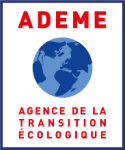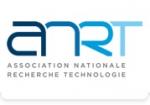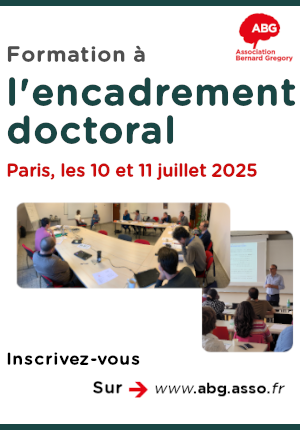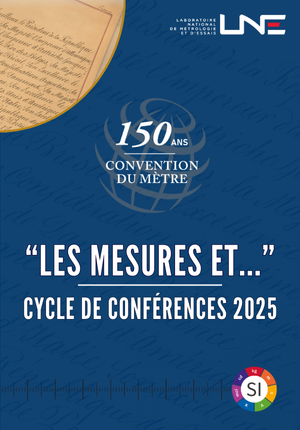Modélisation thermodynamique des oxydes à haute entropie pour l'optimisation des électrolytes HEOx dans les batteries tout solides // Thermodynamic modeling of high-entropy oxides HEOx for electrolyte optimization in solid-state batteries
|
ABG-132496
ADUM-66274 |
Thesis topic | |
| 2025-06-13 |
Université Paris-Saclay GS Chimie
Gif-sur-Yvette - Ile-de-France - France
Modélisation thermodynamique des oxydes à haute entropie pour l'optimisation des électrolytes HEOx dans les batteries tout solides // Thermodynamic modeling of high-entropy oxides HEOx for electrolyte optimization in solid-state batteries
- Physics
batteries tout solides, modélisation CALPHAD , thermodynamique, Oxydes à haute entropie, électrolytes, DFT
solid state batteries, CALPHAD modelling, thermodynamics, High-entropy Oxides, electrolytes, DFT
solid state batteries, CALPHAD modelling, thermodynamics, High-entropy Oxides, electrolytes, DFT
Topic description
L'un des enjeux de la recherche sur les nouvelles batteries est de maîtriser la sûreté de fonctionnement. Ceci incite à remplacer les électrolytes liquides inflammables actuels par des phases solides. L'objectif du projet est de rechercher des matériaux innovants pour des électrodes positives et des électrolytes de batteries au lithium, fonctionnant entièrement en phase solide. Dans ce travail, les oxydes à haute entropie du type (Mg,Co,Ni,Cu,Zn)yLixO ayant fait l'objet d'études expérimentales préliminaires à l'ICMMO, seront étudiés pour l'électrolyte solide. Pour le matériau actif de cathode, on considérera LiCoO2 comme référence et l'oxyde Li(Ni0.8Mn0.1Co0.1)O2 (NMC811) comme matériau intéressant car il possède les mêmes éléments chimiques que l'électrolyte solide. Des calculs de structure électronique à l'échelle atomique par méthode DFT (Density Functional Theory) seront effectués pour calculer les enthalpies libres des composés cristallins prototypes et des solutions solides ainsi que les énergies de formation des défauts. A partir de ces données, un modèle thermodynamique sera développé avec la méthode CALPHAD ( CALculation of PHAse Diagram) pour prédire les compositions optimales en recherchant les oxydes les plus stables. Des synthèses et des caractérisations des composés les plus prometteurs seront réalisées pour valider les calculs. L'enjeu scientifique est également de chercher à expliquer la conduction ionique très élevée de ces oxydes qui reste encore mystérieuse. La piste de la formation de lacunes d'oxygène sera explorée.
------------------------------------------------------------------------------------------------------------------------------------------------------------------------
------------------------------------------------------------------------------------------------------------------------------------------------------------------------
One of the challenges of new battery research is to control operating safety. This is leading to the replacement of current flammable liquid electrolytes by solid phases. The aim of the project is to research innovative materials for positive electrodes and electrolytes in lithium batteries, operating entirely in solid phase. In this work, high-entropy oxides of the type (Mg,Co,Ni,Cu,Zn)yLixO, which have been the subject of preliminary experimental studies at ICMMO, will be investigated for the solid electrolyte. For the cathode active material, LiCoO2 will be considered as a reference and Li(Ni0.8Mn0.1Co0.1)O2 oxide (NMC811) as a material of interest, as it has the same chemical elements as the solid electrolyte. Atomic-scale electronic structure calculations using the DFT (Density Functional Theory) method will be carried out to calculate the Gibbs energies of prototype crystalline compounds and solid solutions, as well as defect formation energies. Based on these data, a thermodynamic model will be developed using the CALPHAD (CALculation of PHAse Diagram) method to predict optimal compositions by searching for the most stable oxides. Syntheses and characterizations of the most promising compounds will be carried out to validate the calculations. The scientific challenge is also to explain the very high ionic conduction of these oxides, which remains a mystery. The formation of oxygen vacancies will be explored.
------------------------------------------------------------------------------------------------------------------------------------------------------------------------
------------------------------------------------------------------------------------------------------------------------------------------------------------------------
Début de la thèse : 01/11/2025
------------------------------------------------------------------------------------------------------------------------------------------------------------------------
------------------------------------------------------------------------------------------------------------------------------------------------------------------------
One of the challenges of new battery research is to control operating safety. This is leading to the replacement of current flammable liquid electrolytes by solid phases. The aim of the project is to research innovative materials for positive electrodes and electrolytes in lithium batteries, operating entirely in solid phase. In this work, high-entropy oxides of the type (Mg,Co,Ni,Cu,Zn)yLixO, which have been the subject of preliminary experimental studies at ICMMO, will be investigated for the solid electrolyte. For the cathode active material, LiCoO2 will be considered as a reference and Li(Ni0.8Mn0.1Co0.1)O2 oxide (NMC811) as a material of interest, as it has the same chemical elements as the solid electrolyte. Atomic-scale electronic structure calculations using the DFT (Density Functional Theory) method will be carried out to calculate the Gibbs energies of prototype crystalline compounds and solid solutions, as well as defect formation energies. Based on these data, a thermodynamic model will be developed using the CALPHAD (CALculation of PHAse Diagram) method to predict optimal compositions by searching for the most stable oxides. Syntheses and characterizations of the most promising compounds will be carried out to validate the calculations. The scientific challenge is also to explain the very high ionic conduction of these oxides, which remains a mystery. The formation of oxygen vacancies will be explored.
------------------------------------------------------------------------------------------------------------------------------------------------------------------------
------------------------------------------------------------------------------------------------------------------------------------------------------------------------
Début de la thèse : 01/11/2025
Funding category
Funding further details
Autre type de financement - Autre type de financement,
Presentation of host institution and host laboratory
Université Paris-Saclay GS Chimie
Institution awarding doctoral degree
Université Paris-Saclay GS Chimie
Graduate school
571 Sciences Chimiques : Molécules, Matériaux, Instrumentation et Biosystèmes
Candidate's profile
Master en sciences des matériaux ou physique du solide. Motivation pour la modélisation/simulation.
Master's degree in materials science or solid state physics. Motivation for modeling/simulation.
Master's degree in materials science or solid state physics. Motivation for modeling/simulation.
2025-07-30
Apply
Close
Vous avez déjà un compte ?
Nouvel utilisateur ?
More information about ABG?
Get ABG’s monthly newsletters including news, job offers, grants & fellowships and a selection of relevant events…
Discover our members
 ADEME
ADEME  Groupe AFNOR - Association française de normalisation
Groupe AFNOR - Association française de normalisation  SUEZ
SUEZ  Ifremer
Ifremer  CESI
CESI  PhDOOC
PhDOOC  MabDesign
MabDesign  ONERA - The French Aerospace Lab
ONERA - The French Aerospace Lab  MabDesign
MabDesign  TotalEnergies
TotalEnergies  CASDEN
CASDEN  Nokia Bell Labs France
Nokia Bell Labs France  Aérocentre, Pôle d'excellence régional
Aérocentre, Pôle d'excellence régional  Laboratoire National de Métrologie et d'Essais - LNE
Laboratoire National de Métrologie et d'Essais - LNE  ANRT
ANRT  Institut Sup'biotech de Paris
Institut Sup'biotech de Paris  ASNR - Autorité de sûreté nucléaire et de radioprotection - Siège
ASNR - Autorité de sûreté nucléaire et de radioprotection - Siège  Généthon
Généthon  Tecknowmetrix
Tecknowmetrix







